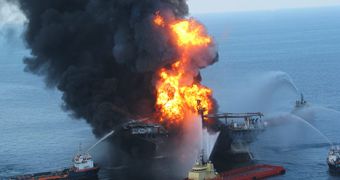This past May 1, a team of University of California – Davis researchers announced that, according to their investigations, marine wildlife in the Gulf of Mexico is still displaying several abnormalities as a result of its having been exposed to oil.
Following their keeping a close eye on killifish embryos in this area, the researchers came to understand that this species experienced a reduction in its hatching success rates because of the oil spill.
As well as this, it appears that embryos now hatch later that they normally would have.
As study lead author Benjamin Dubansk put it, “Our findings indicate that the developmental success of these fish in the field may be compromised.”
By the looks of it, some of these fish embryos display various developmental abnormalities, some of which are noteworthy defects.
“These effects are characteristic of crude oil toxicity,” study co-author Andrew Whitehead commented with respect to the findings of this investigation.
“It’s important that we observe it in the context of the Deepwater Horizon spill because it tells us it is far too early to say the effects of the oil spill are known and inconsequential. By definition, effects on reproduction and development - effects that could impact populations - can take time to emerge,” said specialist further detailed.
The official website for the University of California – Davis says that the Gulf killifish monitored by these scientists are considered to be a so-called canary in the coal mine.
Thus, they are an environmental indicator species whose responses to changes in the environment can help specialists predict what health risks local wildlife is facing.
Presently, researchers are trying to figure out whether species that inhabit the same regions as the Gulf killifish are bound to display the same abnormalities in their breeding patterns and anatomy.
A detailed account of this study and its findings is to be published in the journal Environmental Science and Technology.

 14 DAY TRIAL //
14 DAY TRIAL //